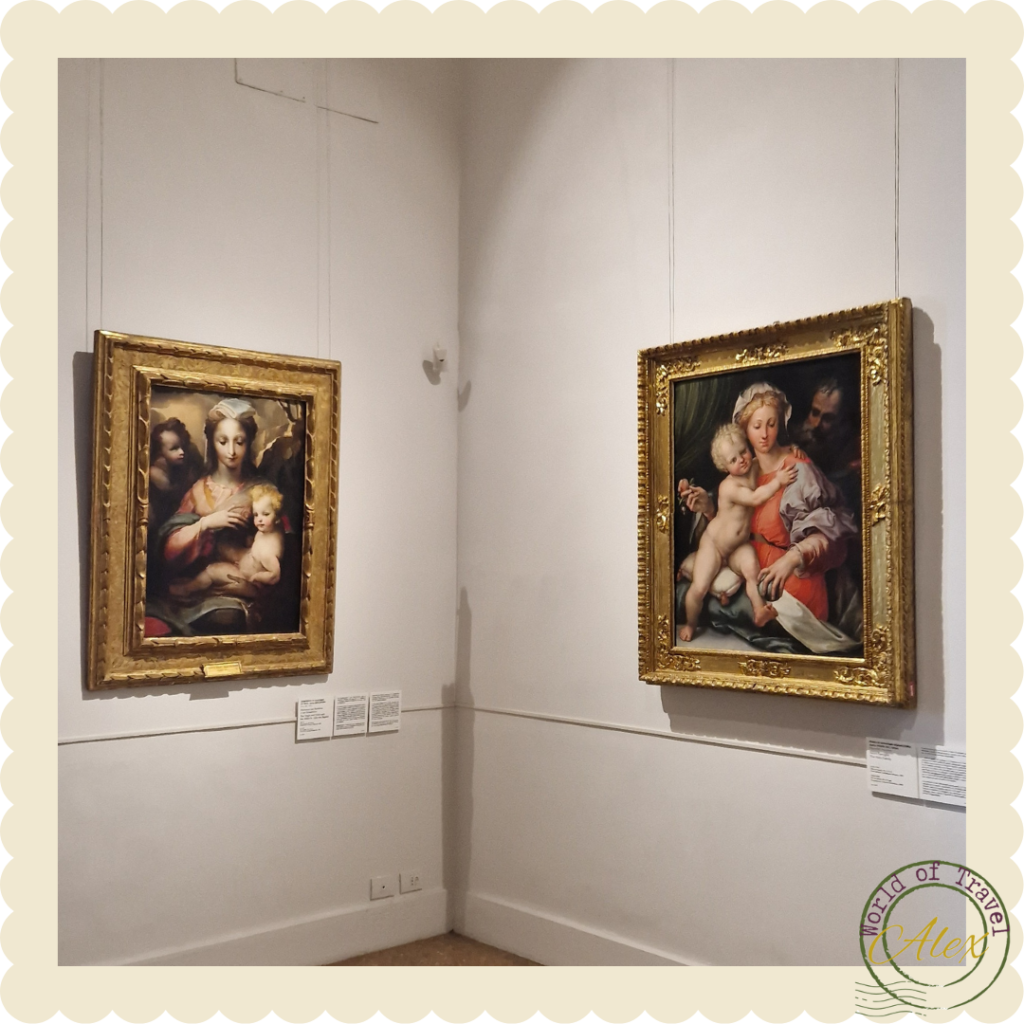Palazzo Barberini, The National Gallery of Ancient Art in Rome
A Baroque Marvel in the Heart of Rome
On your next visit to Rome, you have to visit the beautiful Baroque Palace, Palazzo Barberini, The National Gallery of Ancient Art.
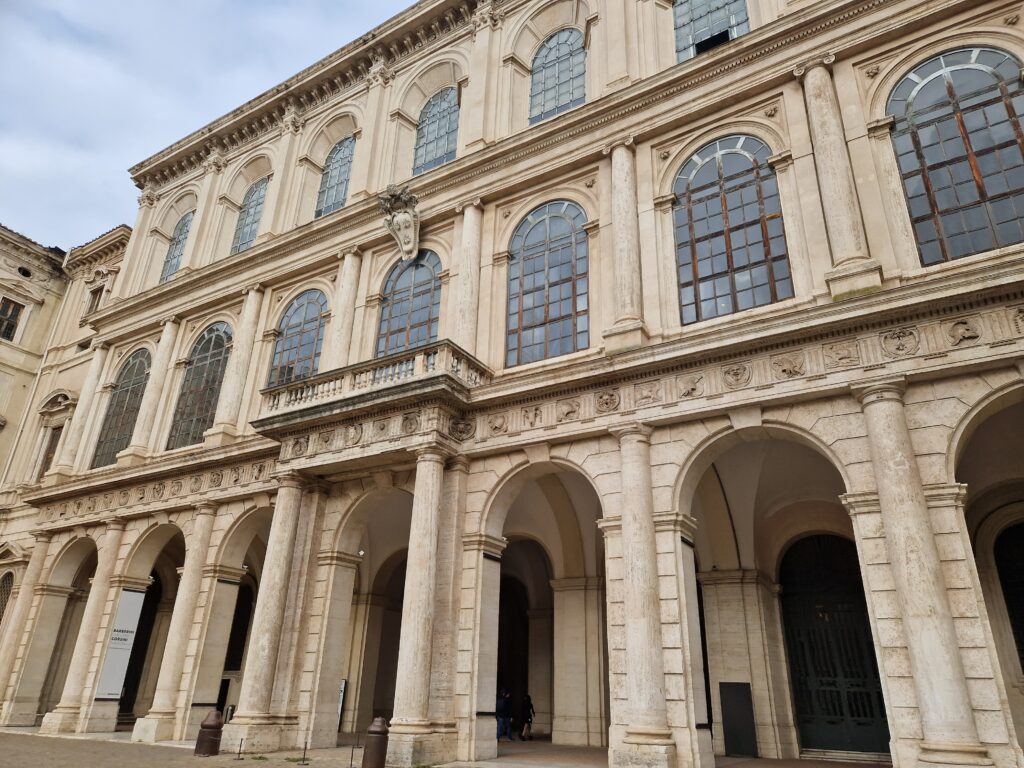
Plan your visit
Juat of the crossroad with Complesso delle Quattro Fontane (Four Fountains) and Chiesa di San Carlino alle Quattro Fontane (Saint Charles at the Four Fountains) by Borromini, you will find one of the most spectacular examples of Baroque architecture in Rome.
Palazzo Barberini is home to the National Gallery of Ancient Art. This lavish palace, crafted by the greatest artists of its time, invites visitors to step back in time to the opulence and artistic brilliance of the 17th century.
Palazzo Barberini
Palazzo Barberini, an exemplary Baroque masterpiece, bears the indelible touch of three influential architects from the 17th century: Carlo Maderno, Gian Lorenzo Bernini, and Francesco Borromini. This opulent palace, with its resplendent facade, grand staircases, and lavishly adorned interiors, stands as a testament to the might and eminence of the Barberini family, a prominent force in 17th-century Rome.
In 1623, Maffeo Barberini, who would later become Pope Urban VIII, embarked on a grand transformation. He acquired a villa on the Quirinal Hill, previously owned by the Sforza family, for his nephews, elevating them to positions of prestige and responsibility. The task of reshaping the villa fell upon Carlo Maderno (1556-1629). Instead of tearing it down, Maderno ingeniously integrated it into a new design. The result was a structure resembling the letter “H,” comprising the Sforza wing, facing Piazza Barberini, and another parallel wing. Maderno’s innovative approach created an open-winged structure, complete with an expansive garden filled with rare plants, secluded courtyards, and formal gardens.
To access the palace today, one enters from via delle Quattro Fontane through a portico facade adorned with a false glass loggia, likely the creation of Gian Lorenzo Bernini (1598-1680). Bernini took over the project’s leadership in 1629, succeeding Carlo Maderno.
The heart of this architectural gem is the magnificent entrance hall, adorned with frescoes by Pietro da Cortona. To reach this grand space, visitors ascend a square-shafted staircase designed by Bernini on one side and an extraordinary oval helicoidal staircase on the other, attributed to Francesco Borromini (1599-1667).
Commencing around 1620, a parade of master artists worked tirelessly on the interior decor, a creative endeavor that continued into the mid-18th century. The last direct heir, Cornelia Costanza, eventually had a Rococo-style apartment added to the top floor. The Barberini family’s descendants resided in the palace’s 18th-century-style apartment until 1955.
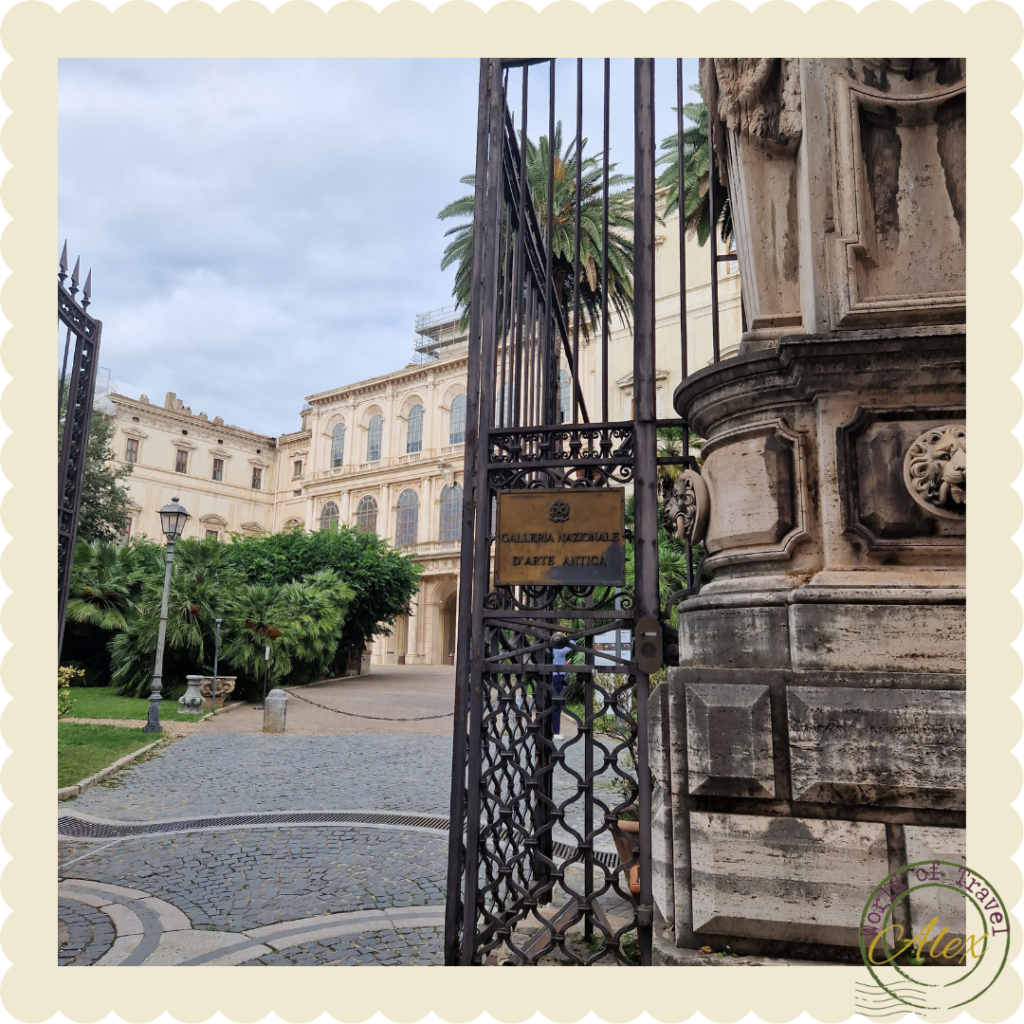
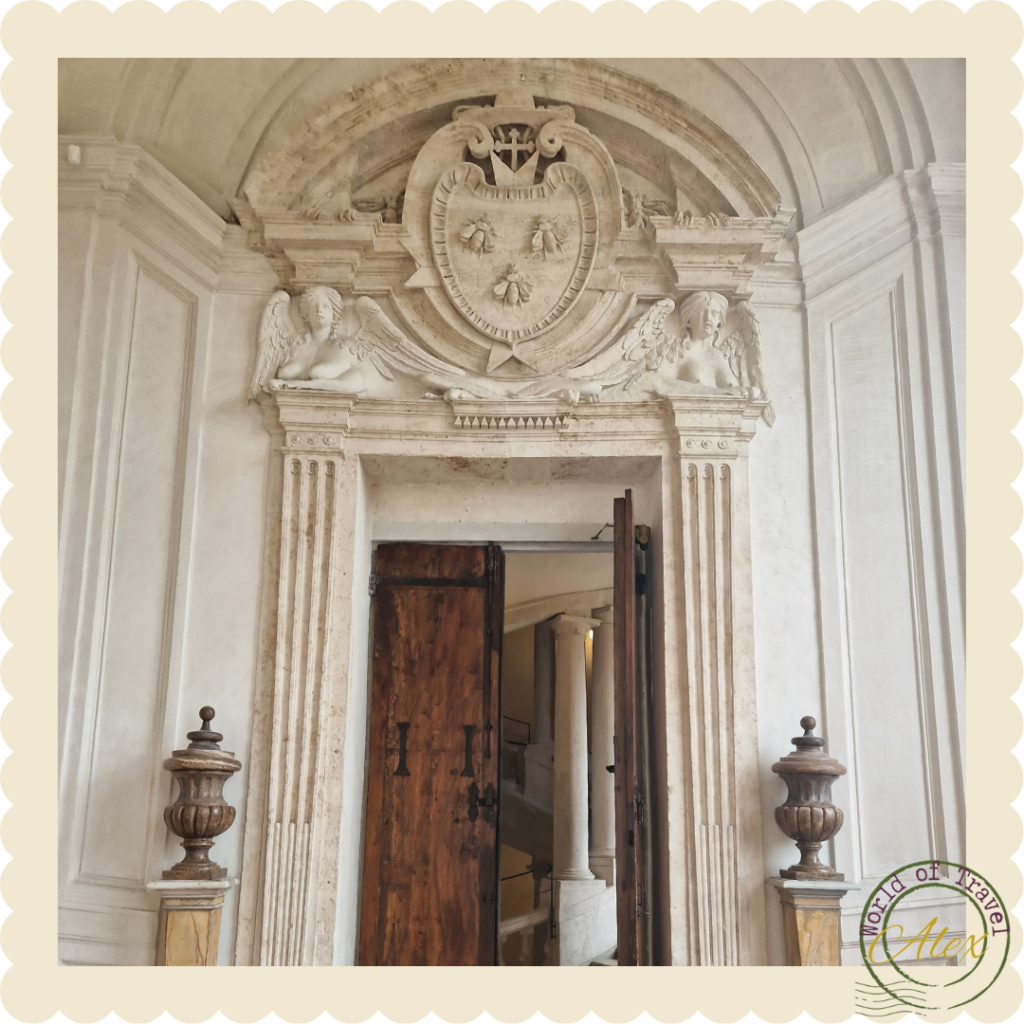

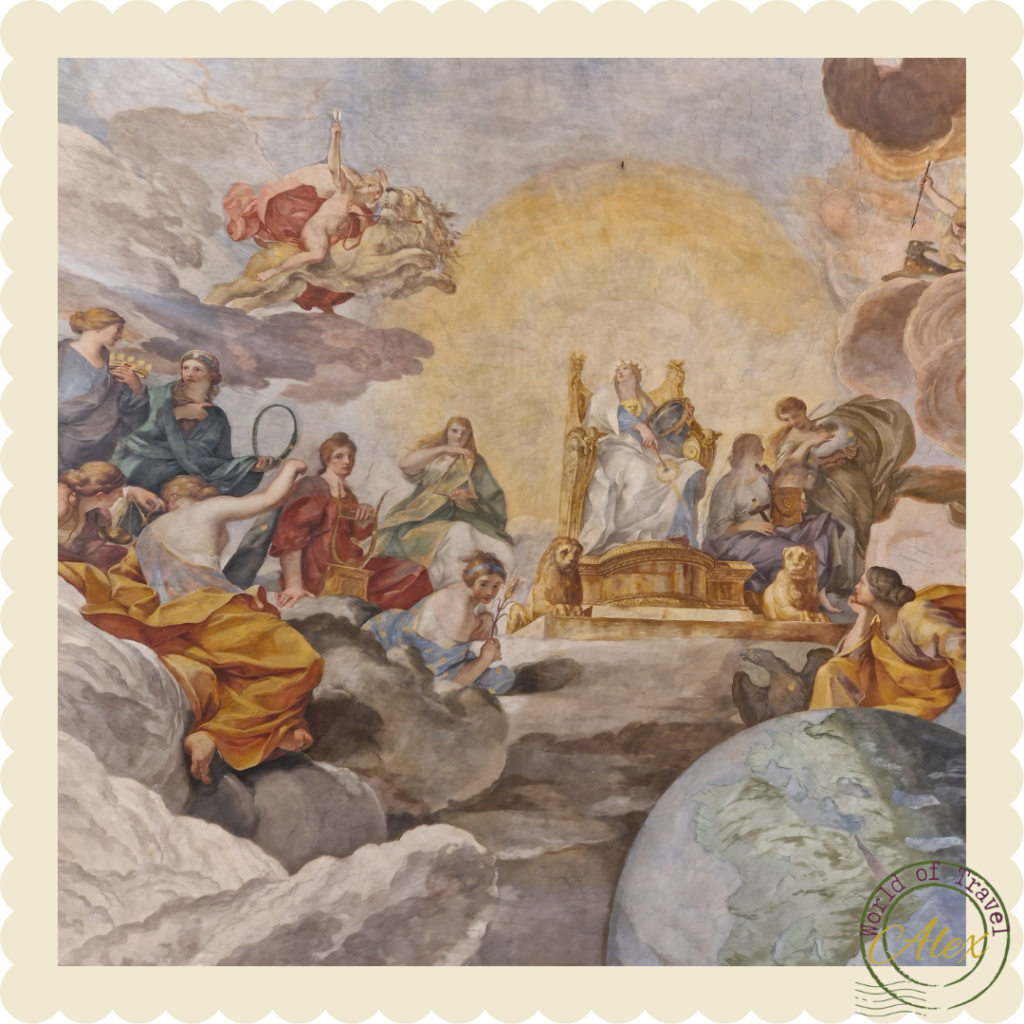
Bernini’s and Borromini’s staircases
The construction of Palazzo Barberini (1625-1633), commissioned by Pope Urban VII, began under Carlo Maderno, expanding an earlier Sforza family palace. After Maderno’s death in 1629, Gian Lorenzo Bernini took over and collaborated with Francesco Borromini. This Baroque masterpiece departs from the traditional Renaissance courtyard layout with two opposing residential wings connected by the main body and two vertical elements.
Although the basic layout existed in the late 16th century, the addition of a grand square staircase and a private oval one was groundbreaking. These two staircases, characterized by paired columns overlooking open balustraded stairwells and natural lighting from above, became educational models. The ongoing debate about the attribution of the square one to Bernini and the oval one to Borromini remains a topic of discussion on Roman Baroque characteristics.


Allegory of Divine Providence by Pietro da Cortona
In Palazzo Barberini’s grand main hall, Pietro da Cortona’s monumental ceiling fresco, created between 1632 and 1639 (with a brief pause in 1637 due to the artist’s travels), stands as a pinnacle of artistry. Cortona was commissioned for this extraordinary project, receiving a significant sum of 3910 scudi and leading its artistic vision.
The fresco, inspired by the poem “L’elettione di Urbano Papa VIII” by Pistoia’s humanist Francesco Bracciolini, portrays a complex allegorical narrative. It traces the divine plan for Pope Urban VIII’s election and the positive transformation of the Papal States.
Cortona’s genius masterfully translates these conceptual themes into a vibrant visual tale, intertwining mythology, Roman history, and fable with dynamic figures and rich colors. The result resembles an epic, symbolic portrayal of ancient history brought to life in the contemporary context.
Cortona’s artistic vision extends to ingeniously designed architectural elements, creating an illusionistic world adorned with painted statues, floral embellishments, masks, and more. These elements structure the fresco into five sections, with central and side scenes from Roman history, creating a visually stunning and engaging narrative. The fresco at Palazzo Barberini is more than just art; it’s a symphony of allegorical storytelling, a masterpiece that transcends the boundaries of reality and wonder.
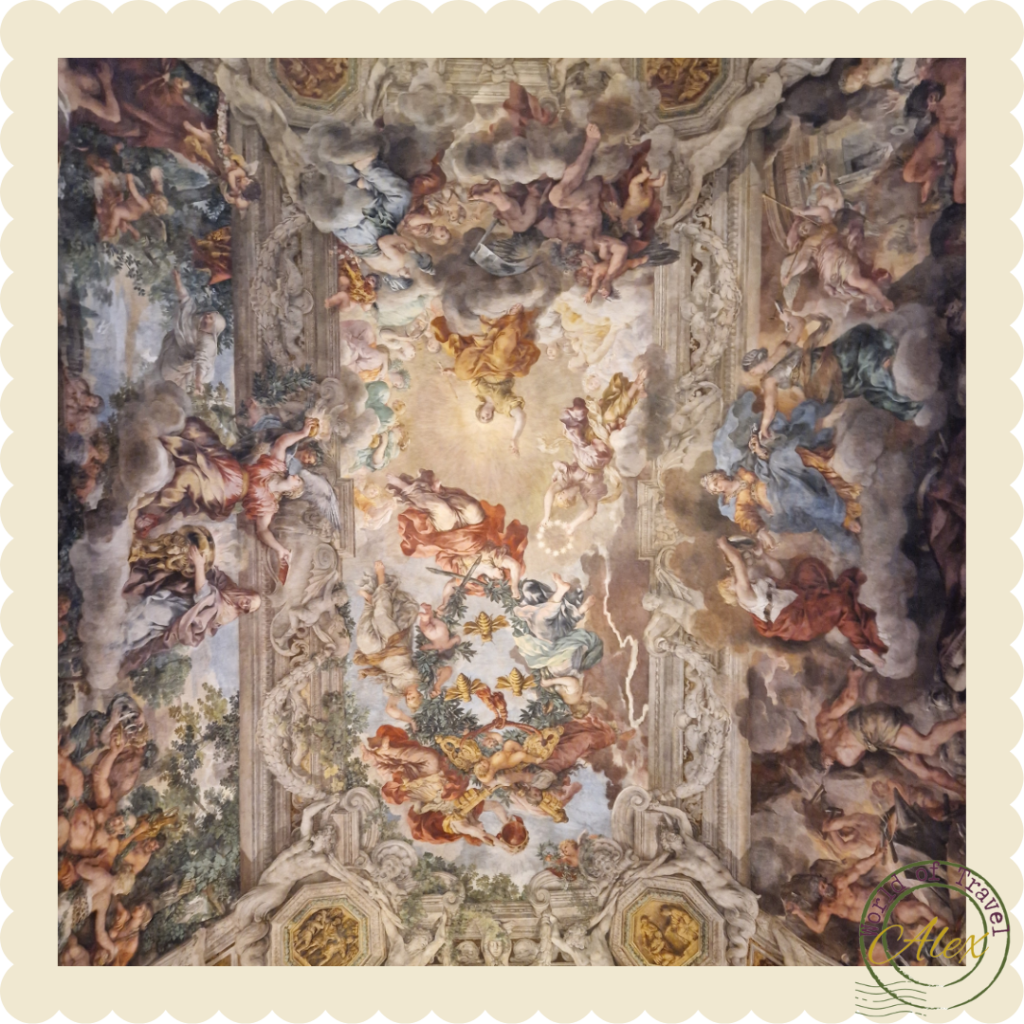


La Fornarina by Raphael
Raphael (1483-1520) Portrait of a Woman (La Fornarina) ca. 1519-1520 Oil on panel, 87 x 63 cm Palazzo Barberini.
In this exquisite portrait, a veiled woman, draped in a crimson cloth, wears an ornate bracelet inscribed with RAPHAEL VRBINAS on her left arm. Her simple form contrasts with her opulent, Middle Eastern-inspired hairstyle. An exquisite head ornament, featuring a ruby and a small emerald or sapphire from which a pearl dangles, adds a symbolic touch alluding to love and union.
Traditionally identified as Raphael’s beloved model, the portrait draws from the Capitoline Venus type. Here, the goddess modestly covers herself, turning her head slightly to the side. The choice of portraying a modest Venus, marked with elements symbolizing conjugal love, is fitting for a portrait of a beloved in early 16th-century bridal iconography. The presence of the veil, the mantle unveiling the fertile womb, and the small wedding ring on her left ring finger further reinforce this notion.
This portrait, a testament to the painter’s intimate connection with the model, was left unfinished in Raphael’s workshop (1520) and later acquired by the Barberini family during the papacy of Urban VIII (1623-1644).



Accessibility and facilities
At the entrance there is a reception and a small museum shop, with a wonderful variety of books in English. Here is also a cloakroom to hang in your backpacks and umbrellas, as they are not allowed inside.
Parking: There are designated parking spaces for individuals with disabilities to ensure convenient access.
Barrier-Free Entrances: The entrances are thoughtfully designed without architectural barriers, ensuring easy access for all.
Wheelchair Ramps: You’ll find wheelchair ramps located adjacent to the ticket office. These ramps provide seamless access to the ground floor exhibition rooms. Additionally, there’s an elevator nearby that will take you to the first-floor exhibition rooms, making sure all visitors can explore our exhibits comfortably.
Public transport
Underground: Metro line A, stop Barberini.
Bus: 53 – 61 – 62 – 63 – 80 – 81 – 83 – 160 – 492 – 590
Opening times and admission
Tuesday-Sunday, 10.00am to 7.00pm
Full Ticket: €12 + 1 additional euro for Emilia Romagna (The ticket is valid 20 days to visit Galleria Corsini)
Reduced Ticket: €2 + 1 additional euro for Emilia Romagna (EU citizens between 18 and 25 years of age. The ticket is valid 20 days to visit Galleria Corsini)
Free: Visitors under 18 years old

